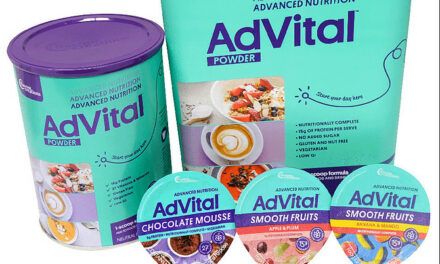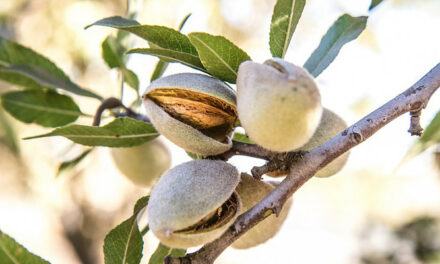In the bustling world of beverages, Tea Tonic emerges as a captivating blend, offering both a delightful taste and potential health benefits. With roots in ancient healing traditions, it has evolved into a contemporary wellness elixir. Boasting potential health benefits, Tea Tonic promises to offer antioxidants and calming properties. Rich in vitamins and minerals, it is meant to complement a balanced and nutritious diet. But, do they? That’s exactly what we are going to explore in this Tea Tonic review.
Tea Tonic teas are also promoted as caffeine-free, making them a great choice for people who are looking for a healthy and relaxing beverage. Tea Tonic, a nuanced blend of herbs and botanicals, has become a beverage of interest for many, including those managing type 2 diabetes.
In this exploration, we delve into what Tea Tonic is, its potential benefits, considerations, and guidelines tailored for individuals with our audience.
Let’s identify Tea Tonic first…
What Is Tea Tonic?
Tea Tonic is a unique and intricate herbal tonic infusion that transcends the boundaries of traditional tea.
It stands out for its diverse composition, incorporating a variety of herbs, spices, and botanicals. It creates a concoction that goes beyond mere refreshment.
Originating from ancient healing practices, Tea Tonic has evolved into a contemporary wellness elixir, captivating the taste buds and promoting potential health benefits.
Instead, it embraces a broad spectrum of ingredients, allowing for an extensive range of flavors and potential therapeutic properties. The careful selection and combination of herbs make each Tea Tonic blend a unique experience.
The Good – Potential Health Benefits of Tea Tonic:
For individuals managing type 2 diabetes, Tea Tonic can offer potential benefits. Rich in antioxidants, it aids in neutralizing free radicals, potentially reducing the risk of chronic diseases associated with diabetes.
Here are some potential health benefits associated with common components found in Tea Tonic.
- Antioxidant Properties
Many Tea Tonic blends are rich in antioxidants, which help neutralize free radicals in the body. Antioxidants play a crucial role in reducing oxidative stress and may contribute to a lower risk of chronic diseases.
- Stress Reduction
Herbs like chamomile and lavender, often found in Tea Tonic blends, are known for their calming and stress-reducing properties. Consuming these blends may help promote relaxation and alleviate tension.
- Digestive Support
Ingredients such as peppermint, ginger, and fennel are often included in Tea Tonic for their digestive benefits. They may help soothe the digestive tract, reduce bloating, and alleviate discomfort.
- Anti-Inflammatory Effects
Turmeric and ginger, commonly found in Tea Tonic blends, have potent anti-inflammatory properties.
- Improved Sleep
Certain blends, especially those featuring chamomile or valerian root, may have sedative effects. They promote better sleep quality and aid individuals with sleep-related issues.
- Weight Management
Ingredients like green tea or dandelion may assist in weight management by boosting metabolism and aiding in the breakdown of fats. However, weight management is a complex interplay of various factors and requires a holistic approach.
- Blood Sugar Regulation
Cinnamon, fenugreek, and certain other herbs found in Tea Tonic blends may have properties that help regulate blood sugar levels, potentially benefiting individuals managing diabetes.
- Immune System Support
The antioxidant content in Tea Tonic, along with immune-boosting herbs like echinacea or elderberry, may contribute to supporting a healthy immune system.
- Cognitive Function
Some herbs, such as ginkgo biloba, may be included in Tea Tonic blends for potential cognitive benefits, enhancing memory and concentration.
Types Of Tea Tonic Blends
The ingredients of a Tea Tonic can vary widely depending on the specific blend or recipe. However, I can provide you with a list of common herbs, spices, and botanicals that are often found in Tea Tonic blends:
- Chamomile
Known for its calming properties, chamomile is often used to promote relaxation.
- Peppermint
Adds a refreshing and invigorating flavor, known for its digestive benefits.
- Ginger
Adds warmth and a hint of spice, often used for its anti-inflammatory properties.
- Hibiscus
Provides a vibrant color and a tart flavor, rich in antioxidants and vitamin C.
- Nettle
Known for its potential nutritional benefits, including vitamins and minerals.
- Turmeric
Adds a warm, earthy flavor and is valued for its anti-inflammatory properties.
- Ginseng
Included in energizing blends, ginseng is believed to boost energy and vitality.
- Cinnamon
Adds a sweet and spicy flavor, often associated with potential blood sugar regulation.
- Fennel
Offers a mild, licorice-like flavor and may aid in digestion.
- Licorice Root
Adds sweetness and is sometimes used for its potential soothing effects. Licorice is also an ingredient of Sugar Balance Herbal Supplement.
Nutritional Values Of Tea Tonic
The nutritional values of Tea Tonic can vary widely depending on the specific ingredients in the blend. Since Tea Tonic is primarily composed of herbs, spices, and botanicals, it may not provide significant macronutrients like protein, fat, or carbohydrates. However, it can contribute certain vitamins, minerals, and other bioactive compounds based on the ingredients used.
Here are some potential nutritional components found in Tea Tonic.
Vitamins and Minerals
- Vitamin C
Commonly found in blends with ingredients like hibiscus, rose hips, or citrus peels.
- Iron
Nettle leaf is an example of an ingredient that may contribute iron to the blend.
- Calcium, Magnesium, and Potassium
Depending on the herbs used, Tea Tonic may offer small amounts of these minerals.
Antioxidants
Various herbs in Tea Tonic, such as green tea, hibiscus, and turmeric, are rich in antioxidants.
Polyphenols
Polyphenols are bioactive compounds found in plants and are often abundant in Tea Tonic blends.
Flavonoids
Certain herbs, like chamomile and citrus peels, contribute flavonoids, which are associated with various health benefits, including heart health.
Essential Oils
Some herbs in Tea Tonic, such as peppermint or ginger, contain essential oils that contribute to the flavor and may have additional health properties.
Fiber
While the fiber content in Tea Tonic is generally low, certain ingredients like fennel or licorice root may provide a minimal amount.
Caffeine
Depending on the blend, Tea Tonic may contain caffeine if it includes ingredients like green tea or black tea. However, many herbal blends are caffeine-free.
When Tea Tonic Is Good?
Tea Tonic can be a delightful addition to the routine of individuals managing type 2 diabetes. Enjoyed in moderation, it can provide moments of relaxation and contribute to overall well-being.
Choosing caffeine-free or low-caffeine blends ensures it aligns with health goals without affecting blood sugar levels.
When Tea Tonic Is Bad?
Excessive consumption or blends high in added sugars can be detrimental for those with type 2 diabetes. Caffeine sensitivity and potential digestive discomfort should be considered.
It’s essential to monitor individual responses and consult healthcare professionals to ensure Tea Tonic complements rather than hinders diabetes management.
The Bad – Other Considerations
While generally safe, Tea Tonic may not be suitable for everyone. Individuals with diabetes should exercise caution, especially if pregnant or dealing with specific medical conditions.
Regular monitoring and communication with healthcare providers are vital to address potential interactions with medications or unforeseen complications.
How Tea Tonic Affects Blood Sugar Levels?
The effect of tea tonics on blood sugar levels can vary depending on the type of tea and any additional ingredients used.
Here are some general considerations:
Non-Caloric Teas
Teas such as green tea, black tea, white tea, and herbal teas are typically low in calories and do not contain sugar or carbohydrates. These teas are unlikely to cause a significant increase in blood sugar levels when consumed plain.
Caffeine Content
Some teas, like black and oolong tea may contain caffeine. Caffeine can temporarily raise blood sugar levels by stimulating the release of glucose from the liver. However, the effect is usually modest, and the impact may vary among individuals.
Herbal Teas
Herbal teas are often caffeine-free and may have properties that can be beneficial for managing blood sugar levels.
For example, certain herbal teas, such as chamomile or cinnamon tea, have been studied for their potential to improve insulin sensitivity and regulate blood sugar.
Tea Blends
Some commercially available tea blends may contain added ingredients, such as dried fruits or flavorings, which can increase the sugar content. It’s essential to read labels and be mindful of the ingredients in pre-packaged tea blends.
Individual Responses
Individual responses to tea can vary. Factors such as genetics, overall diet, and health conditions can influence how your body reacts to different teas.
How Does Tea Tonic Affect Blood Pressure?
For individuals with diabetes, hypertension is often a concern. Tea tonics can have varied effects on blood pressure, like common teas, and the impact largely depends on the type of tea and its specific components.
Here are some general considerations:
Caffeine Content
Teas like black tea, green tea, white tea, and oolong tea contain caffeine. Caffeine is a natural stimulant that can temporarily increase blood pressure.
Herbal Teas
Herbal teas, which are often caffeine-free, might have different effects on blood pressure.
For example, hibiscus tea has been studied for its potential antihypertensive effects. Some research also suggests that regularly consuming hibiscus tea may contribute to modest reductions in blood pressure.
Polyphenols and Antioxidants
Teas are rich in polyphenols and antioxidants, which have been studied for their potential cardiovascular benefits. These compounds may help improve blood vessel function and have a positive influence on blood pressure.
Individual Variability
People may respond differently to tea and its components. Factors such as genetics, overall health, and sensitivity to caffeine can influence how tea affects an individual’s blood pressure.
How Tonic Tea Can Help Losing Weight?
Weight management is a common goal for individuals with type 2 diabetes. Tea Tonic can play a supportive role by boosting metabolism and curbing appetite. Tea tonics can contribute to weight loss through various mechanisms:
Metabolism Boost
Certain teas, particularly green tea, contain compounds like catechins and caffeine that may enhance metabolism, helping the body burn more calories.
Thermogenic Effects
Some teas have thermogenic properties, increasing the body’s heat production and potentially aiding in fat oxidation. This can contribute to weight loss when combined with a healthy diet and exercise.
Appetite Suppression
Some tea varieties, like oolong tea, may have appetite-suppressing effects, helping individuals control their calorie intake and reduce overall food consumption.
Hydration and Satiety
Drinking tea can contribute to overall hydration, and choosing it over sugary beverages can help reduce calorie intake.
Stress Reduction
Tea, especially herbal varieties like chamomile or peppermint, can have calming effects. Managing stress is crucial for weight loss, as stress can contribute to overeating or unhealthy eating habits.
What Does Research Say About Tonic Tea?
Scientific research on Tea Tonic is evolving, with promising findings on its antioxidant properties and potential benefits for diabetes management. Research on tonic teas, which often include a variety of herbal, green, or other specialty teas, is a broad field encompassing different ingredients and their potential health benefits.
Here are some general findings from scientific studies:
Green Tea
- Antioxidant Properties
We know that green tea is rich in antioxidants. Research suggests that these antioxidants may have protective effects against chronic diseases and support overall health.
- Metabolism and Weight Management
Some studies propose that the caffeine and catechins in green tea may have a modest effect on increasing metabolism and aiding in weight management.
- Heart Health
Regular consumption of green tea has been associated with potential cardiovascular benefits, including improved cholesterol levels and blood vessel function.
Black Tea
- Cardiovascular Health
Black tea, like green tea, contains antioxidants and may contribute to cardiovascular health by improving cholesterol profiles and supporting blood vessel function.
- Mental Alertness
The caffeine content in black tea can provide a mild stimulant effect, potentially improving mental alertness and cognitive function.
Herbal Teas
- Hibiscus Tea
Studies suggest that hibiscus tea may have antihypertensive effects, potentially helping to lower blood pressure.
- Peppermint Tea
Peppermint tea has been studied for its potential to alleviate symptoms of irritable bowel syndrome (IBS) and support digestive health.
- Chamomile Tea
Chamomile tea is known for its calming properties and has been associated with improved sleep quality and relaxation.
- Ginger Tea
Ginger tea may have anti-inflammatory and digestive benefits, with some studies suggesting its efficacy in managing nausea.
Cinnamon Tea
- Blood Sugar Regulation
Cinnamon tea, often made by infusing cinnamon bark in hot water, has been studied for its potential to improve insulin sensitivity and help regulate blood sugar levels.
How To Choose the Right Tea Tonic?
Choosing the right tea tonic involves considering various factors, including personal preferences and health goals.
Here are some factors in choosing Tea Tonic :
Flavor Preferences
Identify the flavor profile you enjoy. Whether you prefer bold black teas, the grassy notes of green tea, the floral tones of herbal teas, or something else, choose a tea that aligns with your taste preferences.
Caffeine Content
Decide on your caffeine tolerance and preference. Black and green teas typically contain caffeine, while herbal teas are often caffeine-free. If you’re sensitive to caffeine or want to limit your intake, opt for caffeine-free options.
Health Goals
Consider your health goals. Some teas, like green tea, are rich in antioxidants that may support overall health.
Time of Day
Choose teas based on the time of day. Black tea with higher caffeine content might be suitable for mornings, while caffeine-free herbal teas can be enjoyed in the evening without affecting sleep.
Herbal Blends
Explore herbal blends for additional health benefits. Ingredients like chamomile, ginger, or peppermint are known for their potential calming or digestive properties.
Experiment
Be open to experimentation. Try different teas and blends to discover what you enjoy the most. Don’t hesitate to mix your teas or add natural sweeteners like honey or lemon to enhance the flavor.
Consider Specialized Blends
Some teas are marketed for specific purposes, such as weight loss or relaxation. While these can be interesting to try, keep in mind that individual responses may vary, and it’s essential to maintain a balanced approach.
Consult a Professional
If you have specific health concerns or dietary restrictions, consider consulting a healthcare professional or a nutritionist for personalized advice on the best tea choices for your individual needs.
Conclusion
In conclusion, Tea Tonic offers a flavorful journey for individuals with type 2 diabetes and others. Navigating the nuances involves understanding the potential benefits, being mindful of drawbacks, and making informed choices tailored to individual health needs.
By approaching Tea Tonic with awareness and moderation, it can be a delightful addition to the lives of those managing type 2 diabetes and their caring communities.













